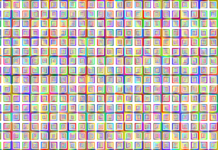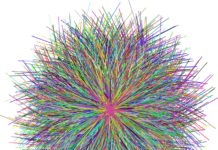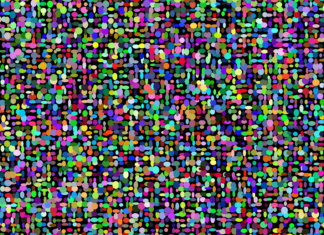ChatGPT: Conversational AI Powered by GPT-3.5
In the ever-evolving landscape of artificial intelligence, ChatGPT has emerged as a remarkable innovation, redefining the boundaries of human-computer interaction. Developed on the robust foundation of the GPT-3.5 architecture by OpenAI, ChatGPT stands as a testament to the advancements in natural language processing and generation. This state-of-the-art conversational AI system possesses the ability to understand and generate human-like text, making it a versatile tool for a myriad of applications ranging from customer support to content creation.
At its core, ChatGPT represents the culmination of extensive research and development in the field of machine learning. The “GPT” in its name stands for “Generative Pre-trained Transformer,” a nod to its underlying architecture and methodology. The GPT model family has gained substantial attention for its proficiency in working with unstructured text data. GPT-3.5, upon which ChatGPT is built, takes this prowess to new heights with its 175 billion parameters—learnable elements that the model uses to grasp intricate patterns and nuances in language. These parameters enable ChatGPT to predict the most probable next word or phrase in a given context, resulting in coherent and contextually relevant responses.
The architecture of ChatGPT hinges upon a transformer neural network—a design that has proven to be revolutionary in natural language processing. Transformers address the limitations of previous models by introducing attention mechanisms, allowing the model to weigh the importance of different words in a sentence. This attention to context is a cornerstone of ChatGPT’s ability to generate coherent and context-aware text. The model is trained in a two-step process: pre-training and fine-tuning. During pre-training, it learns from a vast dataset containing parts of the Internet, absorbing grammar, facts, reasoning abilities, and even biases present in the data. Fine-tuning, on the other hand, tailors the model for specific tasks and narrows down its behavior using a more focused dataset generated with human reviewers.
ChatGPT’s proficiency extends to various applications. One of its notable use cases is in customer support systems. It can efficiently address common user queries, provide troubleshooting assistance, and offer guidance in a conversational manner, streamlining customer service operations. Content creation also benefits from ChatGPT’s capabilities. It can assist writers by suggesting ideas, completing sentences, and even generating entire articles based on a given prompt. This can significantly enhance productivity in industries reliant on written content. Furthermore, ChatGPT can serve as a language learning companion, engaging learners in interactive conversations to improve their linguistic skills in a dynamic environment.
Despite its remarkable abilities, ChatGPT is not without limitations. The model’s responses are generated based on patterns in the data it has been trained on, which means it might occasionally produce plausible-sounding but incorrect or nonsensical answers. The challenge of maintaining accurate and unbiased information is a constant consideration in its development. OpenAI has implemented safety mitigations, such as the use of reinforcement learning from human feedback (RLHF) to reduce harmful and untruthful outputs. However, achieving a perfect balance between creative language generation and avoiding potential pitfalls of misinformation remains an ongoing endeavor.
In conclusion, ChatGPT is a prime example of the strides made in the field of conversational AI. Its foundation in the GPT-3.5 architecture, with its massive parameter count and transformer design, underscores its potential in understanding and generating human-like text. As it finds its way into various industries and applications, ChatGPT holds the promise of reshaping how humans interact with machines, enabling more intuitive and effective communication. While challenges persist in refining its output quality and safety measures, there’s no denying that ChatGPT has opened up a new realm of possibilities for the future of AI-driven conversations.
ChatGPT: Bridging the Conversational Divide with Ingenious AI
In the vast tapestry of technological innovation, few threads have woven as intricately as artificial intelligence, particularly when it comes to language processing and generation. Among the brightest gems adorning this tapestry is ChatGPT, an AI language model that has garnered attention for its remarkable ability to engage in human-like conversations. Born from the marriage of advanced machine learning techniques and a deep understanding of linguistics, ChatGPT stands at the forefront of AI-driven communication, poised to reshape the way we interact with technology.
In a world where language is the cornerstone of human expression, creating machines that can not only understand but also generate language has long been a tantalizing goal. ChatGPT represents a significant stride towards that goal, driven by the idea of endowing machines with the power of articulation. Conversations with ChatGPT can evoke a sense of dialogue with a sentient being, blurring the lines between human and machine communication.
At its core, ChatGPT leverages a sophisticated web of algorithms, probabilities, and data-driven insights to craft responses that emulate human speech. Behind this façade of effortless conversation lies a complex symphony of mathematical functions and neural network layers. Each interaction involves the model’s intricate dance of predicting the most probable words, given the context and the conversation’s trajectory. This predictive dance is not mere mimicry; it’s a manifestation of the colossal amount of text data ingested during the model’s training phase.
The evolution of ChatGPT can be likened to the maturation of a wordsmith, one who learns from the collective literature of humanity. Its training data encompass a diverse spectrum of text sources, from literature masterpieces to casual internet banter. This eclectic diet of words and expressions molds ChatGPT into a conversational virtuoso capable of discussing subjects ranging from the enigmatic cosmos to the mundane intricacies of everyday life.
However, traversing the realm of human conversation isn’t a walk in the park for ChatGPT. The subtleties and nuances embedded within human languages can confound even the most astute linguistic scholars. Similarly, ChatGPT sometimes grapples with contextual intricacies, double entendres, and cultural references that human interlocutors might effortlessly navigate. Yet, every instance of stumbling upon these linguistic hurdles contributes to ChatGPT’s evolution, prompting its creators to refine its understanding continually.
One intriguing aspect of ChatGPT’s dynamics is its ability to evoke emotions through text. While devoid of emotions itself, the model can craft responses that elicit various emotional responses from users. A well-phrased reply can induce laughter, contemplation, or even empathy, showcasing the intricate dance between language, cognition, and sentiment. This unique trait holds potential not only in entertainment but also in therapeutic applications, where ChatGPT could be harnessed to engage users in emotionally supportive dialogues.
The phenomenon of “language molds thought” finds an intriguing partner in ChatGPT. Engaging in conversation with the model reveals that language isn’t merely a tool for communication but a vessel for thought itself. As ChatGPT unravels sentences, it offers a glimpse into the cognitive process of shaping ideas into coherent linguistic forms. This underlying cognitive dance, hidden beneath layers of code, mirrors the intricate symphony of neurons firing in human brains during conversations.
The journey to bestow ChatGPT with its conversational prowess involves a symbiotic relationship between human trainers and machine learners. Human reviewers play a pivotal role in fine-tuning the model’s responses, guiding it towards more accurate, relevant, and context-aware communication. This collaboration blurs the boundaries between creator and creation, as the model is refined through the amalgamation of human expertise and AI’s computational power.
While ChatGPT thrives in dialogues, its creators have envisioned a world where it can serve as more than a conversational companion. The model’s ability to ingest and regurgitate information can transform it into an interactive encyclopedic resource. Imagine querying ChatGPT for explanations on complex scientific phenomena, historical events, or philosophical concepts, receiving insightful responses in return. This potential as an educational aid marks another stride towards AI integration into everyday life.
However, the allure of ChatGPT’s capabilities shouldn’t overshadow the ethical considerations it engenders. The model’s responses are contingent upon the data it has been fed. If that data contains biases, inaccuracies, or contentious perspectives, ChatGPT might inadvertently perpetuate or amplify them. Navigating this ethical labyrinth requires a conscientious approach from developers, focusing not only on refining the model’s linguistic skills but also on imbuing it with an ethical compass.
In the grand tapestry of AI evolution, ChatGPT forms a vibrant thread, interweaving technological ingenuity with linguistic sophistication. Its conversations, while devoid of genuine consciousness, illuminate the potential of machines to understand and interpret human thought patterns. As ChatGPT continues to refine its conversational dexterity and expand its horizons, it beckons us to explore the captivating intersection of human language and artificial intelligence, inviting us to ponder the profound mysteries of both mind and machine.
ChatGPT: A Symphony of Language and Code
In the digital age, the fusion of human ingenuity and technological prowess has birthed marvels that were once relegated to the realms of science fiction. One such marvel, ChatGPT, now stands as a testament to the astonishing capabilities of artificial intelligence. It’s a manifestation of our ceaseless quest to bridge the chasm between human communication and machine understanding, a quest that has taken us on a journey through the intricacies of language, cognition, and code.
At its heart, ChatGPT encapsulates the essence of linguistic artistry entwined with the rigidity of programming logic. This fusion is a ballet of sorts—a choreography that transpires beneath the surface as the model processes text and generates responses. The interplay of data, algorithms, and computations is akin to the synchronized movements of dancers on a grand stage, creating an illusion of fluidity and coherence.
Delving into the essence of ChatGPT requires a glimpse into the dance of neural networks. These intricate structures, inspired by the human brain’s interconnected neurons, are the building blocks of the model’s intelligence. Imagine each neuron as a performer, contributing its unique flair to the ensemble. The symphony of these virtual neurons orchestrates the complex patterns of language, enabling ChatGPT to decipher context, predict words, and formulate meaningful replies.
The training process that refines this symphony is a virtuoso performance in itself. Vast volumes of text are the notes that compose this composition. Like a musician practicing scales to master an instrument, ChatGPT learns from diverse sources, imbibing the cadence of literature, the pulse of online conversations, and the resonance of academic discourse. This eclectic training imbues the model with versatility, allowing it to seamlessly transition from casual banter to in-depth analysis.
The profundity of language is evident in the nuanced interactions between ChatGPT and its human counterparts. Engaging in conversation with the model is akin to an intricate duet, where each partner responds to the other’s cues. The dance of dialogue involves not just the exchange of words but a delicate undercurrent of comprehension, anticipation, and adaptation. ChatGPT’s ability to grasp context isn’t mere mimicry; it’s a testimony to the model’s proficiency in deciphering the subtext of human communication.
Yet, the symphony of communication is riddled with challenges. Language, as a medium of expression, possesses layers of meaning that transcend dictionary definitions. Idioms, metaphors, and cultural references infuse conversations with depth, often eluding a literal interpretation. ChatGPT’s journey resembles that of a linguistic explorer, deciphering the subtleties that human speakers effortlessly navigate. The model’s missteps on this journey aren’t failures; they’re stepping stones towards a more profound understanding.
One of the enchanting dynamics of ChatGPT is its role as an ideation partner. It doesn’t just respond; it generates ideas, uncorks the creative genie, and collaborates on the canvas of thought. Writers, artists, and innovators find in ChatGPT a co-creator that weaves novel concepts and fresh perspectives. This collaborative duet between human ingenuity and AI assistance pushes the boundaries of creativity, fusing imagination with algorithmic reasoning.
In the realm of education, ChatGPT’s potential harmonizes beautifully with the quest for knowledge. It’s akin to having a patient tutor available at any time of day, ready to elucidate complex topics and demystify arcane subjects. The model’s knack for simplifying intricate concepts holds promise for learners seeking enlightenment in diverse domains. This symbiosis between AI and education underscores the evolution of ChatGPT as an intellectual companion.
However, the serenade of technology isn’t without its dissonances. Ethical concerns, akin to dissonant notes in a symphony, emerge as AI blurs the lines between human and machine interactions. Ensuring that ChatGPT’s responses adhere to ethical guidelines and avoid perpetuating biases requires an unwavering commitment to responsible AI development. The challenge isn’t just to refine the model’s language skills, but to infuse it with an ethical conscience that aligns with human values.
As the symphony of ChatGPT continues to resonate in various domains, from customer service to content creation, it beckons us to ponder the philosophical underpinnings of its existence. The very act of conversing with an AI elicits questions about what it means to be conscious, sentient, and aware. The dialogues we share with ChatGPT mirror the age-old philosophical discourse about the nature of thought, language, and cognition.
The emergence of ChatGPT serves as a poignant reminder of human adaptability. We’ve harnessed the power of AI not merely to create computational tools, but to forge companions that can hold a semblance of dialogue. This mirrors our innate ability to adapt to new forms of interaction, embracing the novel while preserving the essence of what it means to communicate.
In the grand theater of technological progress, ChatGPT graces the stage as a performer that captivates, challenges, and catalyzes introspection. Its evolution mirrors our own—an expedition through uncharted territories, learning from missteps, and harmonizing with the evolving cadence of technological innovation. As we continue this dance between code and conversation, we traverse the landscape where the boundaries between human and machine are beautifully, enigmatically blurred.






















